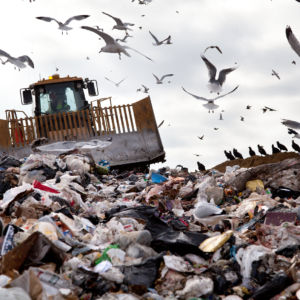Puerto Rico is in the middle of a crisis. Not just an economic crisis, but an environmental one too.
The Environmental Protection Agency has ignored many claims that several of Puerto Rico’s landfills are not in compliance with federal law, according to a recent report, leading some to believe that Puerto Rico’s problem could become the next Flint water crisis.
“The EPA knew about the practices in Puerto Rico and hasn’t done anything about it,” said Hiram Torres Montalvo, a Puerto Rican attorney and cofounder of Puerto Rico Limpio — the group who published the report.
“Two-thirds of our landfills operating are totally toxic and the EPA is doing nothing about it,” he said.
In 1994, the EPA gave Puerto Rico’s Environmental Quality Board local control to bring its landfills into compliance.
According to documents and correspondences obtained by Puerto Rico Limpio, EPA Region 2 Administrator Judith Enck did nothing to force EQB to bring most of the 27 landfills up to compliance despite EPA reports that classify them as being in “significant non-compliance.”
Montalvo said one of the biggest health problems Puerto Rico is facing is the Zika virus.
“They [EPA and EQB] are not taking the proper precautions and mixing the garbage, leeches and contaminated water are the kind of conditions that create the perfect breeding ground for the Zika virus,” he said.
The Centers for Disease Control and Prevention estimates that as much as 25 percent of the island’s population could have the disease by the end of mosquito season. Experts suggest that as many as 270 babies could be born with the birth defect microcephaly, which causes infants to be born with shrunken heads and other health issues.
Montalvo said he is also concerned that some of the landfills are “unlined open dumps” without any liner between the garbage and the ground.
“The north region of Puerto Rico sits over this large underground water source and all of these landfills are without a protective liner,” he said. “It’s scary because it can go through the ground and into the water system. We’re working right now on getting the water tested to see if it is contaminated.”
Many experts have linked the Puerto Rico landfill crisis to the Flint water crisis that started in 2014 when a change in the water source of the city in Michigan resulted in significant contamination issues.
“In Puerto Rico, it has been known as the Flint of the Caribbean and the EPA is not paying attention to the problem,” Montalvo said. “They [the people of Flint] were lucky that someone found out about it and it became a big issue. Even though a lot of people know we have a problem with our landfills, the EPA still hasn’t done anything.”
Montalvo attended a Congressional briefing in June with lawmakers, staffers and other advocacy groups to talk about the “environmental injustice” happening in Puerto Rico.
“If this were happening in Chicago, I would be surrounded right now by legislators from Illinois,” said Rep. Luis Gutierrez (D-Ill.), who is of Puerto Rican heritage.
“We can’t have all these toxic landfills in Puerto Rico that we wouldn’t have in Michigan, in Maryland, in Illinois, in California or anywhere from the districts that all of you come from,” he said. “You wouldn’t have it in your backyard. It wouldn’t happen.”
Dr. Michael Dorsey, an appointee of the EPA National Advisory Committee, at the briefing even called it “environmental racism” — the placing of hazardous waste and polluting industries near communities of color.
“It is a triple crisis: not just an economic and environmental problem, but a social justice problem as well,” he said.
Some people have said that the EPA has broken the law under Title VI of the Civil Rights Act of 1964 by either knowingly or unknowingly participating in environmental racism in Puerto Rico and Flint.
According to a 2015 study by the Center for Public Integrity, the EPA’s Office of Civil Rights has “routinely failed to enforce Title VI.”
“The office has dismissed nine out of every 10 community claims alleging environmental discrimination, and has never once issued a formal finding of a Title VI violation,” the study states.
“The system isn’t perfect by any means,” said Neil Gormley, a senior associate attorney for Earthjustice, a nonprofit environmental law organization. “Decisionmakers ought to be aware of their duty under Title VI and be conscious of whether the decision they are making or action they are taking is impacting others.”
The EPA claims environmental justice will be a top priority as they seek public comment on their 2020 environmental justice agenda.
The office for EPA Region 2 did not respond to InsideSource’s request for comment on this story.

